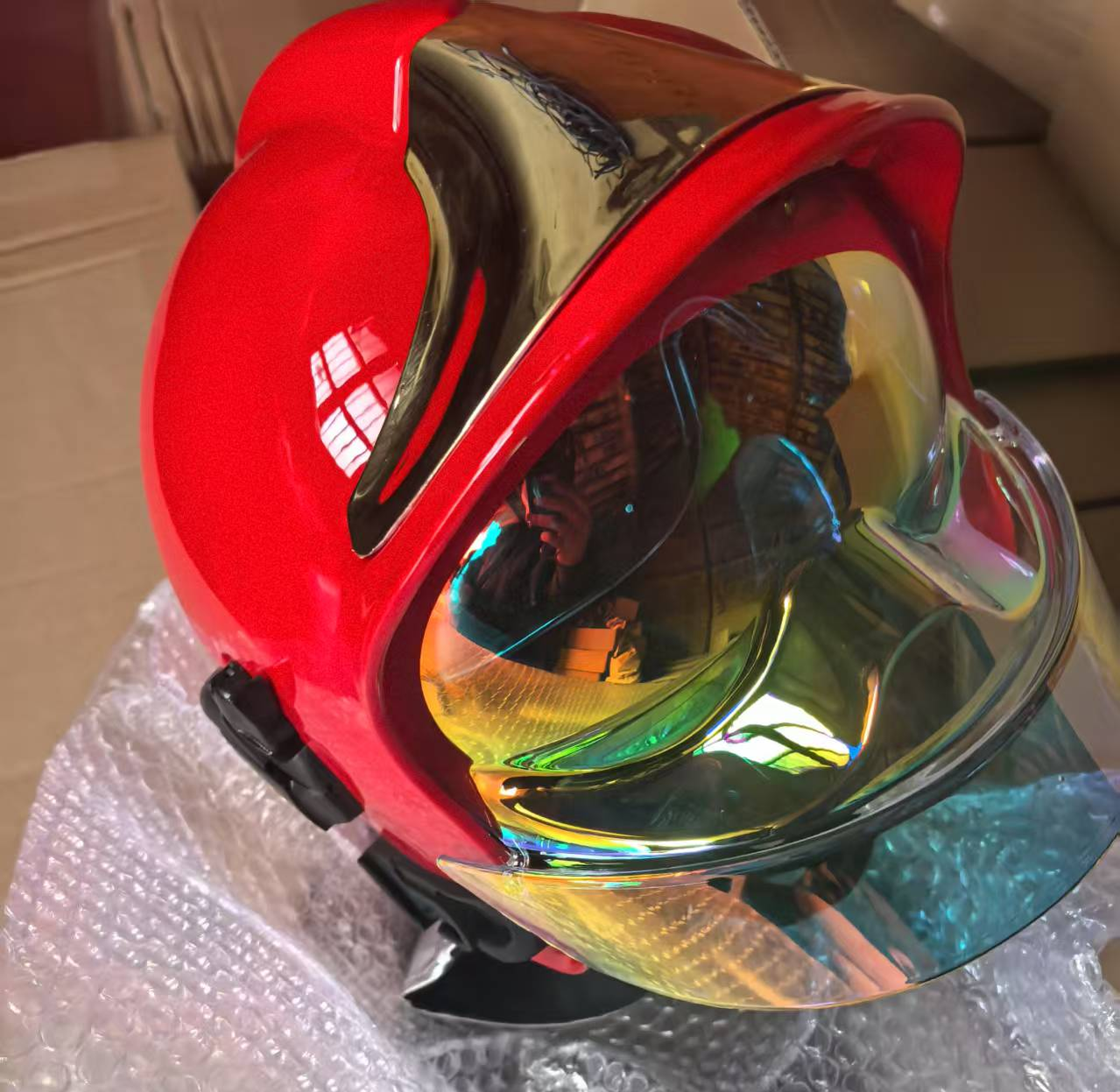Selecting the right firefighting helmet is a critical decision that directly impacts your team’s safety and operational efficiency. With diverse designs, materials, and certifications available, it’s essential to prioritize your team’s unique needs. This guide outlines key factors to consider when evaluating firefighter helmets, ensuring compliance, comfort, and long-term protection.
Safety Standards: The Foundation of Protection
Firefighting helmets must adhere to rigorous safety certifications. These standards ensure protection against heat, impact, and electrical hazards:
- Structural Firefighting (NFPA 1971): Mandates resistance to flames, penetration, and high-impact forces. Ideal for building fires and enclosed environments.
- European Operations (EN 443): Focuses on lateral impact protection and penetration resistance, common in European firefighting scenarios.
- Wildland Firefighting (NFPA 1951/EN 16473): Requires lightweight, ventilated designs for extended wildfire operations.
Key Tip: Always verify certification labels and ensure helmets meet your region’s regulatory requirements.
Helmet Design: Matching Form to Function
Helmet designs vary significantly based on operational demands:
A. Traditional Structural Helmets
- Features: Wide front and rear brims, reinforced shells, and extended neck protection.
- Best For: Building interiors and scenarios requiring full head/neck coverage.
B. Jet-Style Helmets
- Features: Streamlined profile, no rear brim, and reduced weight for agility.
- Best For: Technical rescues, confined spaces, and rapid-response scenarios.
C. Hybrid Fire & Rescue Helmets
- Features: Modular attachments (visors, communication mounts) and balanced protection.
- Best For: Multi-role teams handling both firefighting and emergency medical tasks.
D. Specialized Wildland Helmets
- Features: Lightweight materials, extended brims, and enhanced ventilation.
- Best For: Prolonged wildfire suppression in open terrain.
Material and Comfort: Balancing Protection and Wearability
- Composite Materials: Thermoplastic or polycarbonate shells offer high heat resistance and impact absorption while keeping weight low.
- Leather: Rarely used in active firefighting today due to weight and maintenance requirements, but valued for ceremonial purposes.
- Suspension Systems: Adjustable 4- or 6-point harnesses reduce neck strain and improve stability during extended wear.
Pro Tip: Test helmets with other PPE (e.g., SCBA masks, goggles) to ensure compatibility and comfort.
Critical Accessories: Enhancing Functionality
Modern helmets support add-ons tailored to mission needs:
- Heat-Resistant Visors: Protect against debris and radiant heat.
- Communication Integration: Mounts for radios or Bluetooth devices improve team coordination.
- Headlamps and Camera Mounts: Essential for low-light environments and situational awareness.
Mission-Specific Selection
- Urban Firefighting: Prioritize NFPA-certified structural helmets with full coverage.
- Wildland Operations: Opt for lightweight, ventilated designs with extended brims.
- Technical Rescues: Choose streamlined helmets with accessory compatibility for confined spaces.
Budget and Maintenance Considerations
- Cost Range: Helmets vary from mid-range ($200–$400) to advanced models ($500+), depending on materials and features.
- Lifespan: Most helmets last 5–10 years with proper care. Regularly inspect shells, suspensions, and straps for wear.
Procurement Checklist
1. Confirm compliance with NFPA, EN, or other regional standards.
2. Test ergonomics with full PPE gear.
3. Prioritize weight distribution and ventilation for long shifts.
4. Partner with suppliers offering repair services and spare parts.
Final Thoughts
A firefighter helmet is more than just equipment—it’s a lifeline. By aligning your choice with operational requirements, safety standards, and team comfort, you ensure maximum protection in high-risk environments.
If you need to purchase firefighter helmets for your fire department, please consult us to evaluate the actual performance of the helmets.

 EN
EN
 AR
AR
 HI
HI
 JA
JA
 KO
KO
 NO
NO
 RU
RU
 CA
CA
 TL
TL
 IW
IW
 ID
ID
 SR
SR
 UK
UK
 VI
VI
 SQ
SQ
 GL
GL
 MT
MT
 TH
TH
 TR
TR
 FA
FA
 AF
AF
 MS
MS
 SW
SW
 CY
CY
 IS
IS
 MK
MK
 HY
HY
 AZ
AZ
 EU
EU
 KA
KA
 HT
HT
 UR
UR
 BN
BN
 LA
LA
 MN
MN
 NE
NE
 SO
SO
 MY
MY
 KK
KK
 UZ
UZ



